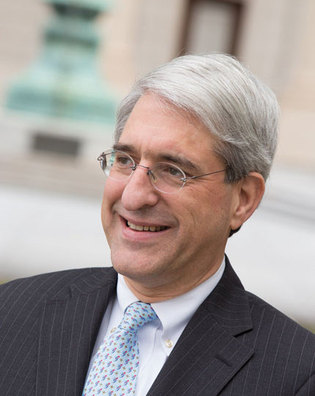 loading
loading
Q&A: Peter SaloveyYale, Ban Ki-moon, and your heritageThe university hosts a global conversation about cultural preservation. The Yale Alumni Magazine regularly holds a conversation with Yale president Peter Salovey ’86PhD to provide a forum in which alumni can learn his views. (Interviews are conducted both in person and by e-mail and condensed for print.)  Mark OstowIn this issue, Salovey talks about the Global Colloquium of University Presidents, held this year at Yale. View full imageY: Every year or two, six northeastern universities hold a colloquium with the UN. Yale was host this year, and the topic was preserving cultural heritage. What’s the purpose of these colloquia, and why did Yale pick this topic? S: The Global Colloquium [of University Presidents] was established to address subjects of interest to the leadership of the United Nations—and to make university expertise available to the UN. In years past, the colloquium looked at topics such as global health and academic freedom throughout the world. We chose cultural heritage as our focal point because Yale has incredible expertise and resources in this area. The art galleries, the Peabody Museum, the Sterling and Beinecke Libraries, our entire library system—we have quite a collection of collections, one of the world’s greatest and, I believe, unsurpassed in higher education. As part of my vision for a more unified Yale, I have an interest in bringing together people from across the university to study topics on multiple levels of analysis—creating a synergy that doesn’t exist elsewhere. The field of cultural heritage preservation is an ideal example. Yale has extraordinary expertise in the chemistry of material culture: how pigments, textiles, metals, and other surfaces change due to age, natural disasters, climate change, and other factors. We also have incredible expertise on the digitization of art objects, some of the best conservation experts in the world, and a new conservation laboratory on the West Campus that brings them all together. And Yale includes faculty who study the public policy issues as well—what are nations’ obligations to protect heritage sites from warfare and terrorism, even if that means troops on the ground? What are the obligations to combat looting and the selling of cultural objects on the black market? You can look at these questions from multiple perspectives, and there are scholars and scientists on our campus at every level of analysis on these issues. Y: After Palmyra, cultural heritage must be on the minds of many people at the UN. S: Yes, and there are other reasons this topic matters to the United Nations. The UN locates peacekeeping forces throughout the world. UNESCO works specifically on cultural heritage sites. And the UN can be an influential global policy leader in bringing the world to consensus on how we should be treating both tangible and intangible heritage. The threats to cultural heritage are global—climate change, tourism, looting, terrorism—and can only be addressed through multinational solutions. Y: Yale invited presidents and faculty of nearly 30 universities from throughout the world. S: All are universities that have expertise in this field. We also had a partner unique to this particular colloquium—the Smithsonian Institution. We held a series of panels, breakout sessions, and full-group discussions. Y: What do you think the colloquium did for Yale itself? S: The colloquium enriched Yale in many ways. Having [UN Secretary-General] Ban Ki-moon on our campus delivering a keynote speech on cultural heritage reaffirmed the significance of our work—and of our faculty expertise—in this area. We formed and expanded on important connections with the visiting institutions, including the Smithsonian. And our faculty were introduced to each other’s work. In anticipation of hosting the colloquium, we put out a call to the faculty and to the experts working on our collections—and the turnout was very robust. The colloquium also brought to light issues we hadn’t yet considered. For instance, there are scholars at Yale working on the preservation of languages that risk becoming extinct—languages and other kinds of intangible culture: a dance form, a particular ritual. This opened our eyes to the idea that cultural heritage is not only chiseled into stone, laid out on a tapestry, painted on a canvas, tiled into a mosaic. As important and wonderful as those things are, it is far broader. I would add that, as a social psychologist, I have an interest in issues of identity and memory, and how the latter shapes the former. This includes representations of our culture; the preservation of cultural heritage is critical for humankind.
The comment period has expired.
|
|